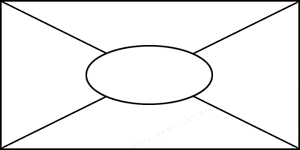Learning Intention: To learn how to give useful and constructive feedback
Watch the video Austin's Butterfly.
After watching discuss with your table they types of feedback the children gave Austin. Why was it helpful? What was good about it?
In pairs, you will be given a jigsaw set of feedback. Place the feedback under the heading you think is correct. Discuss the effect of this feedback on your work. Would it help you? How would it make you feel? You can write dot point answers.
|
Mode |
Field |
Tenor |
|
Types of feedback |
Add the examples to the field |
What is the effect of this feedback on your work? |
|
Unhelpful Cheerleader Feedback |
|
|
|
Helpful (Constructive) Feedback |
|
|
|
Unhelpful (Could be negative) Feedback |
|
|
-
Fantastic job!
-
Bad spelling. Fix it.
-
Read over PEC paragraph one; your P sentence needs to be clearer.
-
You are a star.
-
Sound.
-
Most of this is straight out of the book.
-
You can't spell.
-
Be more careful with your writing.
-
Add an example to your PEC paragraph.
-
No C sentence in your PEC paragraph. Why don't you try to sum up your opinion?
-
I love love love what you've done here.
Comment: Which feedback would help improve your work more?
You will be given another student's PEC paragraph from the previous activity. Read the PEC paragraph, refer back to the activity.
Using the following criteria as a guide, give the student feedback to help improve their PEC paragraph.
1. P sentence - clearly tells you what the paragraph is going to be about
After reading the feedback, re-write your P sentence. Have another peer read over it, re-write it again if you need.
2. Reasoning and Evidence - does the writer clearly explain the following:
-
What part of the text structure they read
-
Why is it important?
-
What information are we told in this part of the chapter?
-
Does the writer use appropriate evidence?
Edit/re-write your paragraph using the feedback given.
Comment: Was it easy or hard to give feedback? Do you think you gave helpful (constructive) feedback? Explain why/why not.





















_320_240.jpg?Expires=1714145614&Signature=GWFK9oouZZfX~ryD~bJW6GgC-s7jDVVSiX0lmZmvEG83IiYLTJ4UUnYZUR7PvnmmGYPMtDO52qvQd3ruKWvmc0E-kGW-3bwJnhT2K9F94wyVFSUdIGSOJU7ZfUe-Q988Vmlwoat54jreZmaQUEaQSHv3COX24zoeEzGQIUtwFQ5DsPf9iNNmTcASCcehDNW2oIG1qOgm-CscMkqvXPxihqrOWB15ghvH-LWsdNJ~OLd1emdF0MeOoPS7W0KtXZak~ENfBOeNNVRKIQAmlSlMl9evYyB4l5uDACCg1BJ0xykh0SCAQ6sl~dfYdvKz9w5ABKdeHsniyQ-XJR4~848xtA__&Key-Pair-Id=APKAJELYXGUCCDL7FUQA)






